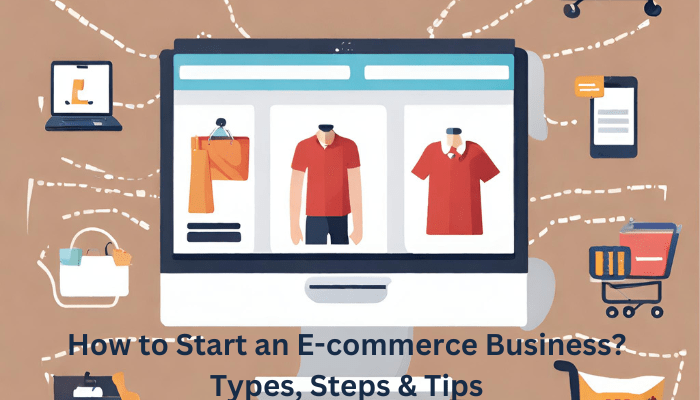E-commerce has witnessed a surge in popularity, with the number of online stores increasing significantly between 2019 and 2023. Venturing into e-commerce offers a promising avenue for individuals seeking autonomy and profitability in online business endeavors. Our comprehensive guide offers invaluable insights into commencing and flourishing in the e-commerce domain.
Understanding E-commerce
E-commerce essentially entails the online buying and selling of products or services, providing customers with a virtual platform to browse and make purchases conveniently. This digital marketplace offers unparalleled convenience, allowing consumers to shop from the comfort of their homes or on-the-go via mobile devices. While some e-commerce ventures may have physical counterparts, many operate exclusively in the digital realm, leveraging the power of technology to reach a global audience. With the rise of e-commerce, businesses can transcend geographical boundaries and cater to diverse consumer needs with ease.”
Types of E-commerce Businesses
E-commerce enterprises generally fall into four main categories:
- Business to Customer (B2C): These platforms cater directly to individual consumers, akin to traditional retail setups.
- Business to Business (B2B): B2B e-commerce involves transactions between businesses, typically involving bulk or recurring orders.
- Consumer to Consumer (C2C): C2C platforms facilitate peer-to-peer transactions, fostering online marketplaces where users can buy and sell goods.
- Consumer to Business (C2B): In C2B e-commerce, individuals offer products or services to businesses, often through sponsored content or affiliate marketing.
Reasons for Embarking on an E-commerce Journey
The appeal of e-commerce ventures lies in several advantages:
- Reduced Overhead Costs: Compared to traditional brick-and-mortar establishments, e-commerce operations typically incur lower initial investments and operational expenses.
- Wider Market Reach: E-commerce platforms offer access to a global customer base, transcending geographical boundaries and expanding market reach.
- Scalability: E-commerce enterprises can scale operations more efficiently compared to conventional retail setups, facilitating rapid business growth.
- Customer Convenience: Online shopping caters to the convenience-seeking preferences of modern consumers, enhancing customer satisfaction and loyalty.
- Data Accessibility: E-commerce platforms provide valuable insights into customer behavior and preferences, enabling data-driven decision-making.
Initiating Your E-commerce Venture: A Step-by-Step Approach
Conceptualize Your E-commerce Business Idea
Identify a niche market and product/service offering aligned with your interests and target audience preferences, aiming for specificity to reduce competition.
Validate Your Ideas
Assess market demand and viability through comprehensive market and product research, ensuring alignment with customer needs and preferences.
- Market-based criteria: Market-based criteria focuses on market factors that will impact your business. It considers market size, competition, target customers
- Product-based criteria: Product-based criteria revolve around your products and services. It examines your potential selling prices, size, weight, and durability, how seasonality may affect demand and product regulations
Develop a Business Plan
Once you hone in on your business idea and validate it, it’s time to create a business plan. Think of your business plan as a blueprint that outlines what you hope to accomplish and how you’ll get there. In general, a business plan involves the following components
- Executive summary
- Competitor research
- Product or service descriptions
- Marketing and sales strategy
- Financial projections
Establish Your Business
Select a suitable business structure, register your enterprise, obtain necessary licenses and permits, and set up a dedicated business account.
Procure or Develop Your Products
Determine your product sourcing strategy, whether through in-house production, wholesale acquisition, or drop shipping, ensuring quality and reliability.
Build Your E-commerce Website
Develop a user-friendly and visually appealing e-commerce website using a reputable platform or website builder, optimizing for mobile compatibility and seamless navigation.
Streamline Order Fulfillment
Implement efficient order fulfillment processes, including inventory management, shipping, and customer service, to ensure timely delivery and customer satisfaction.
Promote Your E-commerce Business
Deploy a multi-faceted marketing strategy encompassing SEO, social media marketing, email campaigns, and paid advertising to drive traffic and boost sales.
Pro Tips for Nurturing Your E-commerce Enterprise
- Prioritize customer retention through exceptional service and loyalty initiatives.
- Optimize shipping strategies to minimize costs and enhance customer satisfaction.
- Provide responsive and personalized customer support to foster trust and loyalty.
- Diversify distribution channels to maximize reach and revenue opportunities.
- Utilize upselling and cross-selling techniques to increase average order value and maximize profits.
Sum Up
Embarking on an e-commerce journey entails meticulous planning, strategic execution, and ongoing refinement. By following the steps outlined in this guide and implementing best practices, you can position your e-commerce venture for success in the dynamic digital landscape. Best of luck on your entrepreneurial odyssey!



